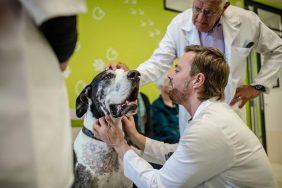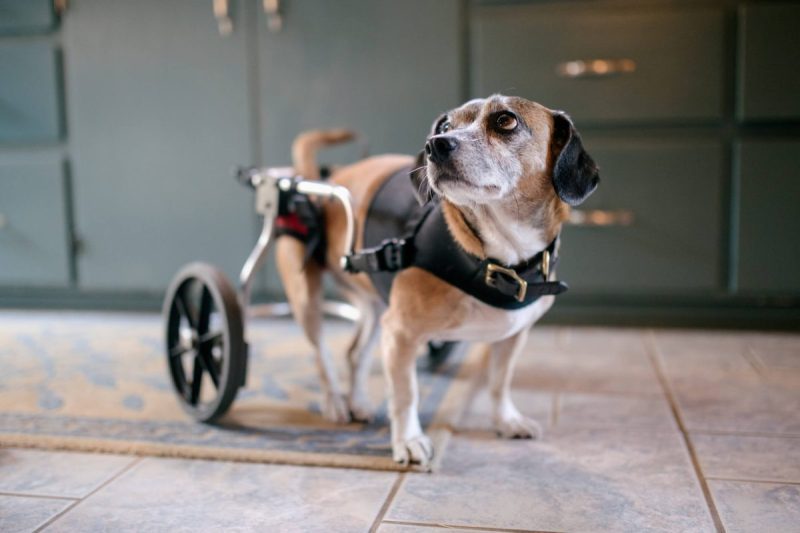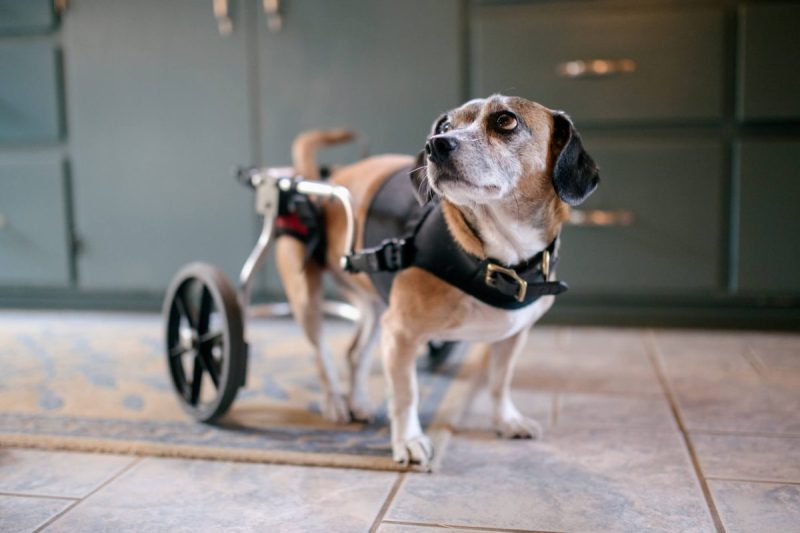
Spinal and vertebral birth defects in dogs are a range of congenital conditions that affect the structure and function of the spine and vertebrae. These malformations occur when there is an abnormal development of the vertebrae and spinal cord during the embryonic stage. As such, your dog’s spine issues can manifest in various forms, from mild to severe, and can significantly impact their mobility, quality of life, and overall health. While some defects may be present at birth, others may develop as the puppy grows.
Here’s what you should know about the types, symptoms, causes, and treatments for these conditions in dogs.
Table of contents
- Types of spinal and vertebral birth defects in dogs
- Hemivertebrae
- Atlantoaxial instability
- Block vertebrae
- Butterfly vertebrae
- Transitional vertebrae
- Spinal stenosis
- Spina bifida
- Symptoms of spinal and vertebral birth defects in dogs
- Causes of spinal and vertebral birth defects in dogs
- Treatments for spinal and vertebral birth defects in dogs
- Physical therapy, hydrotherapy, and alternative strategies for pain relief
- Corrective surgery for dogs with spinal deformities
Types of spinal and vertebral birth defects in dogs
Several types of spinal and vertebral birth defects can affect dogs, each with its own set of challenges and implications. Below are some of the most common types:
Hemivertebrae
Hemivertebrae is a condition where the vertebrae are abnormally shaped. This defect is often seen in brachycephalic breeds like Bulldogs and Pugs. These malformed vertebrae can cause spinal instability and can lead to scoliosis — causing sideways spine curvature — or kyphosis, which is forward spine curvature. It may also lead to lordosis, resulting in an inward curvature of the spine. While some dogs may remain asymptomatic, others may experience pain, difficulty walking, or even paralysis.
Atlantoaxial instability
This condition involves an instability or misalignment between the first two cervical vertebrae — the atlas and axis. Atlantoaxial instability is often congenital but can also result from trauma. It is commonly seen in toy breeds such as Chihuahuas and Yorkshire Terriers.
Block vertebrae
Block vertebrae occur when two or more vertebrae are fused together during development. This fusion can limit the spine’s flexibility and can cause compensatory stress on other parts of the spinal column. Although some dogs with block vertebrae may not show symptoms, others might experience pain or reduced mobility, particularly if the fusion affects a significant portion of the spine.
Butterfly vertebrae
This defect is characterized by a cleft or separation in the vertebrae, giving it a butterfly-like appearance on X-rays. It often occurs in the thoracic spine and is most commonly seen in breeds with screw tails, such as Bulldogs and Boston Terriers. Butterfly vertebrae are often incidental findings and may not cause clinical symptoms. However, severe cases can lead to spinal deformities and associated problems.
Transitional vertebrae
Transitional vertebrae occur when a vertebra assumes characteristics of two different types of vertebrae. For example, a thoracic vertebra may exhibit features of a lumbar vertebra. These abnormalities are most commonly seen at the junctions of spinal regions, such as the cervicothoracic, thoracolumbar, and lumbosacral junctions.
Spinal stenosis
Spinal stenosis refers to the narrowing of the spinal canal, which can compress the spinal cord and nerves. This condition can be congenital or develop as a result of other vertebral anomalies. It often leads to pain, mobility issues, and neurological deficits. Large breeds, such as Great Danes and Doberman Pinschers, are more prone to this defect.
Spina bifida
Spina bifida occurs when the vertebrae do not form properly, leaving a gap in the spine. This can result in the spinal cord and nerves being exposed, which can cause severe neurological problems. Breeds such as English Bulldogs and French Bulldogs are more prone to this condition.
Symptoms of spinal and vertebral birth defects in dogs
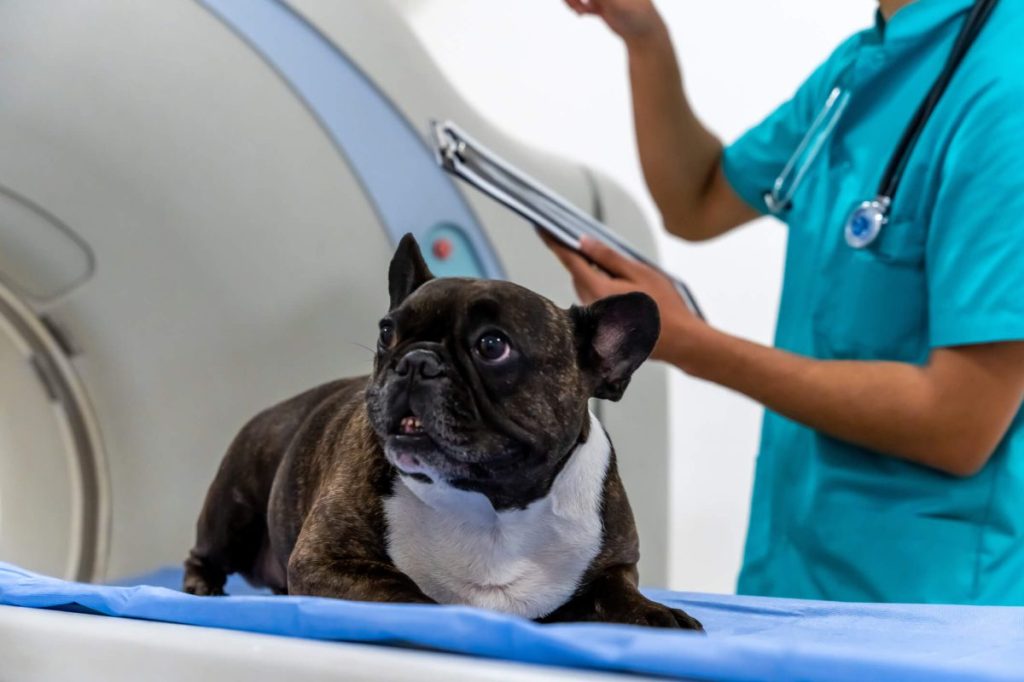
The clinical signs of spinal and vertebral birth defects can vary widely depending on the type and severity of the malformation. Some dogs may exhibit no obvious symptoms of spine issues and live relatively normal lives, while others may show signs of pain, difficulty walking, or neurological deficits. Common symptoms that may indicate a spinal anomaly include:
- Abnormal gait or lameness
- Back pain or sensitivity
- Paralysis of the hind limbs
- Muscle weakness
- Incontinence or difficulty with bowel and bladder control
- Visible deformities of the spine
If you observe any of these symptoms in your dog, consult with your vet as soon as possible for a proper diagnosis. Your vet will likely begin with a physical examination and review your dog’s medical history. To get a clearer picture of the spinal abnormalities, imaging techniques such as X-rays, CT scans, or MRIs are commonly used. These diagnostic tools allow for a detailed view of your dog’s vertebrae and spinal cord, which can help pinpoint the exact nature and extent of the defect.
Causes of spinal and vertebral birth defects in dogs
Spinal and vertebral birth defects in dogs can arise from a combination of genetic, environmental, and nutritional factors. Genetically, certain breeds are predisposed to these conditions due to hereditary traits passed down through generations. For instance, breeds like French Bulldogs, Pugs, and English Bulldogs often display higher incidences of congenital spinal issues due to their genetic makeup. Moreover, environmental factors — including exposure to toxins or infectious agents during the mother’s pregnancy — can also play a significant role. These toxins can disrupt normal fetal development and lead to malformations of the spine and vertebrae.
Nutritional deficiencies during pregnancy are another critical cause. A lack of essential vitamins and minerals can impair the development of the fetal skeleton. Inadequate levels of folic acid, for example, have been linked to neural tube defects in many species, including dogs. Additionally, physical trauma to the mother during pregnancy may adversely affect the developing puppies, resulting in spinal deformities.
It is worth noting that, since these defects are often hereditary, breeding affected dogs could perpetuate the cycle of pain and disability in future generations. As such, responsible breeding practices are essential to minimize the occurrence of these debilitating conditions.
Treatments for spinal and vertebral birth defects in dogs
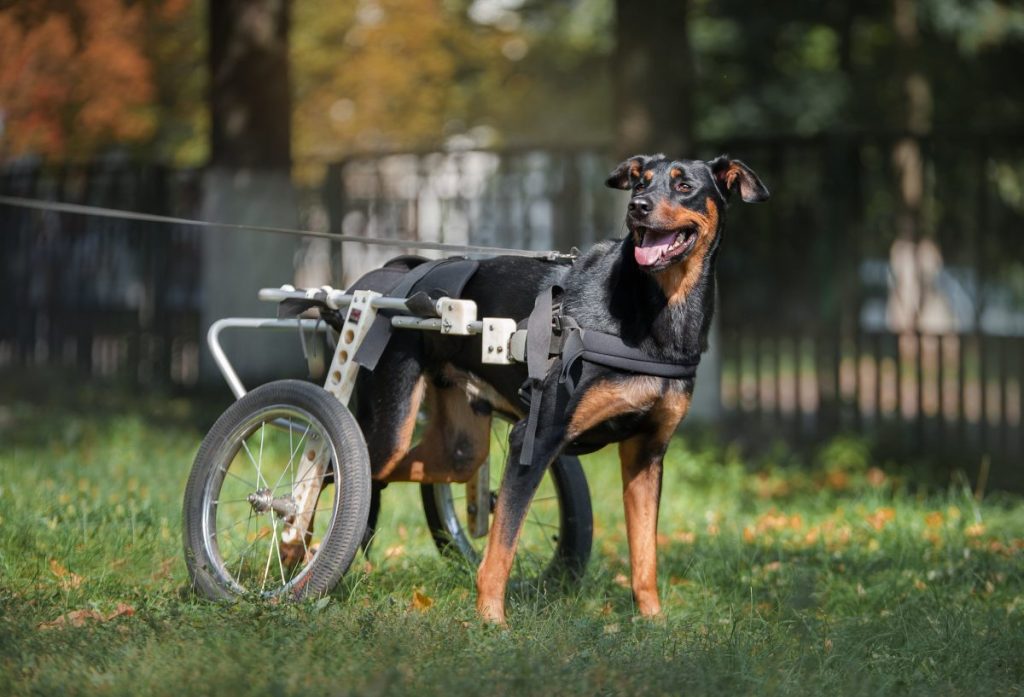
If your dog is diagnosed with a spinal or vertebral birth defect, there are several treatment options available that can significantly improve their quality of life. First and foremost, you’ll want to consult with a veterinary neurologist or orthopedic specialist who can tailor a treatment plan specific to your dog’s condition. Depending on the severity of the defect, treatments may range from non-invasive methods like physical therapy and pain management to surgical interventions aimed at correcting structural abnormalities.
Physical therapy, hydrotherapy, and alternative strategies for pain relief
Physical therapy can be incredibly beneficial for dogs with mild to moderate defects as it helps strengthen the muscles around the spine and improve mobility. Hydrotherapy, for instance, offers a low-impact way for your dog to exercise without putting undue strain on their spine. Furthermore, pain management strategies such as medications and acupuncture can also provide significant relief.
Corrective surgery for dogs with spinal deformities
In more severe cases, surgery might be necessary to correct deformities or relieve pressure on the spinal cord. However, since surgery carries its own set of risks, be sure to have a detailed discussion with your vet before making a decision. Consider if your dog’s spinal issue is interfering with their quality of life.
Related health conditions


